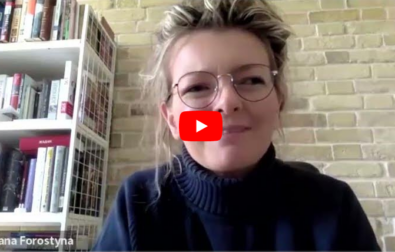They call it “little Vienna” because of the elegant buildings in its historic centre. Along with Lviv, Černivci is the architectural jewel of the Bukovina region, and an important cultural centre in western Ukraine. For the past twenty years, the town has been, for Italians, “the city of carers”: many domestic care workers in Italy come from Černivci. For the past four months, however, it has been “the city of displaced persons”, the first internal reception centre for a people on the move.
As of data from July, there are over 60,000 war refugees there. Many have arrived from the Mykolayiv oblast, repeatedly and relentlessly targeted by the Russian army since the initial phase of the conflict. Others are from Kherson, Dnipro, Zaporižžja and Mariupol. "They are part of the poorest social class," explains a volunteer from the NGO Adra, "people who at the time of the invasion did not have the economic means to leave the country.”
Černivci, a safe haven while “waiting for all this to end”
On the sidewalks, signs implore resistance “in the name of the fatherland and God”. Giant yellow-and-blue posters feature slogans and phrases from the Bible, as well as blunt calls to “tell the Russians to go to hell”. A quiet but tenacious resistance is offered by the Ukrainians of the West.
Tamara is seventy-five years old, with thin eyebrows carefully drawn on a porcelain skin and a fringe of curly blond hair left uncovered by a red headscarf. She comes from Mykolayiv, "a very beautiful town near Odessa". She is proud of her origins, she says. "I'll never go back there again,” she adds nonetheless, cupping face in her hands. She is still reeling from the fright of the sudden bombardment, and from the equally sudden decision to leave everything behind: her home, her son of whom she has had no news, her lifelong friends.

Tatiana, on the other hand, has five children and is in her ninth month of pregnancy. “It's a boy”, she smiles, pointing to her belly. “His name will be Damian.” She expresses herself in excellent Italian, at times almost without an accent: “I learnt it in Milan, I worked there for two years as a carer,” she explains. Every week, together with three other compatriots, she climbs into a white minibus bound for the border.
It is forty kilometres, a journey of an hour and a bit, to the Siret customs. This is a transit point for refugees heading for Romania, and a major sorting centre for tons of humanitarian aid destined for internally displaced persons.
"Some of the material coming from Italy is collected in this square," explains Andrej Avram, head of an orphanage in the area and right-hand man of Father Sylvestre. With boundless enthusiasm, he coordinates the incoming donations on behalf of the Orthodox monastery of Bogdana. "We receive food parcels, and also blankets, clothing, prams and other basic necessities for infants," he says.
In Černivci, a number of priests have rented a gymnasium. "A part of the donations will arrive there. They will then be allocated to the most needy families, but also to some families in Odessa, thanks to an agreement between local churches," explains Avram. He sees an important efficiency gain in this triangle of solidarity.
"Now, for example, we are being asked for generators because there is a shortage of light and electricity." It is a well-organised network involving the entire community, from individual citizens to local authorities and institutions. The network connects Černivci to the Romanian towns of Radauti and Suceava, which are the first real link to Western Europe.
In the waiting room of the train station, Ina waits for the 1.30 pm train to Bucharest: sitting next to her is her seven-year-old daughter Nastia.
“We came from Kiev”, she says. “It took us a week to get here.” She worked in television, her husband in IT - “before being called to serve in the army”, she adds. "I didn't want to leave but he forced me to run away. You know, for the baby."

From the loudspeakers, a voice announces the train’s arrival. It is time to continue the journey: “Amsterdam and then on to Ecuador, to join my mother and sister.”
Stuck to the glass of the station door, only the children's drawings remain. The flag of Ukraine; two tanks with cannons facing each other; a heart and a dove - "мир", "peace".
The platform fills up quickly. Meanwhile, more refugees have arrived from the border, escorted by fire-brigade vehicles. Volunteers ask if they need help, or slip them a few kind words, a wish for good luck. "Thank you. We Ukrainians would like to return to our homes. We want our lives back.”
Was this article useful? If so we are delighted!
It is freely available because we believe that the right to free and independent information is essential for democracy. But this right is not guaranteed forever, and independence comes at a cost. We need your support in order to continue publishing independent, multilingual news for all Europeans.
Discover our subscription offers and their exclusive benefits and become a member of our community now!












